Archive for March, 2014
March 30th, 2014 by dave dorsey
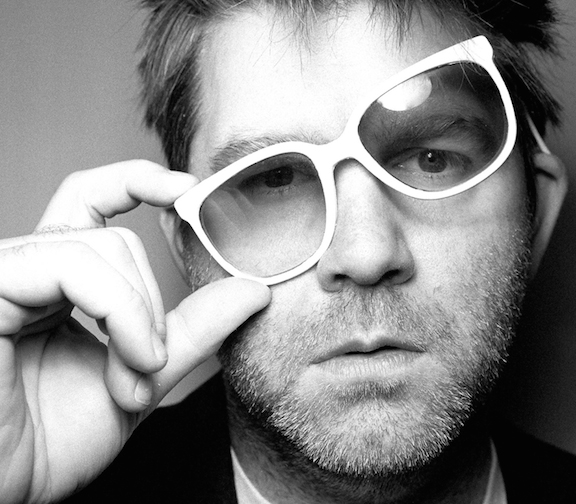
James Murphy
FROM: Sound Opinions #431
James Murphy may have mothballed LCD Soundsystem, but he wants you to make some underground music for him. If it works, music will rise up like steam from those grates where you hear the subway passing below your feet. Every subway station will have its own song, which it will compose and play spontaneously, at the touch of a passenger’s body, passing in and out of the station. That has to qualify as a public art project. no? Those astute Chicago boys at Sound Opinions publicized this recently in one of their interviews:
James Murphy: I’m trying to do music for subways.
SO (joking): You’d have to be really loud.
JM: I’m serious.
SO: Really?
JM: I’ve been trying for 14 years to make the turnstiles make music. I want to make every station in New York have a different set of dominant keys. I want each subway station to make music in a particular dominant key so that when someone grows up and hears a piece of music he might think, “Wow, that’s like Union Square.” When you go through a turnstile it would beep in a certain note. The root note would have a higher percentage of going off, and then a third and a fifth note. (Editor’s, uh, note: That would make a major chord. ) Each turnstile would have a random note generator based on a certain percentage. During rush hour, they might make a beautiful sound. New York is a brutal city, and I love it, but this would be one little bit of kindness.
SO: It could start in Jersey on the PATH trains, and New York would get jealous.
JM: You could have your active brain turned off but hear the notes of your station and wake up from your book and know it’s time to get off. Of course I’m envisioning a New York where everyone’s reading on the train.
Or they could have LCD Soundsystem in their earbuds and all that body music would be for naught. Wish somebody would take him up on it. What are the odds De Blasio would even consider it?
March 28th, 2014 by dave dorsey
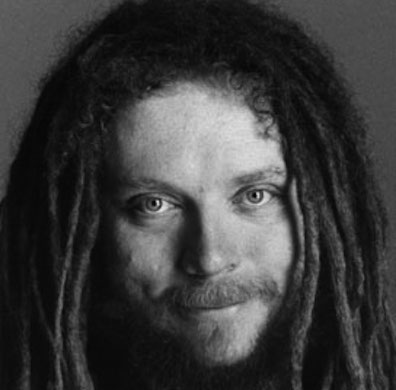
You can find a few thoughts on how the Internet and technology are eroding the middle class–and democracy along with it, if you follow the logic–in this interview with Jaron Lanier from Salon. It offers musings from Lanier, an artist and musician and computer scientist, as well as a professional contrarian, on how the creative class is the canary in the digital coal mine. But he’s addressing every species of bird: “Because technology will get to everybody eventually.” (His thoughts on authorship and books is especially noteworthy, on how books, as a medium, are connected to “personhood” more than as a vehicle for imformation. Which for me is why a painting matters.)
All of this ought to be weighed against how much the Internet actually makes possible for an artist. For Lanier, who is interested primarily in musicians, the Internet offers a ton of exposure but doesn’t create an economic model to sustain the music. It’s a truism now that bands have to go on the road perpetually and live off gate receipts and t-shirt sales, rather than through sales of what they record in the studio. (There are always exceptions.) I know some artists can actually make a steady income by selling work from their websites, though I doubt that the numbers are large. What the Internet does offer is a way to get one’s work out in front of people, even if it’s only as a reproduction. Yet it also helps enormously in getting the actual work onto walls where people can stand in front of it. Online you can find all sorts of opportunities for exhibitions, both domestic and international. I had a painting shown in London based on a call for entries I found online. This would never have happened without electronic media. Visual art has rarely been a sensible career path. The role of teaching has been crucial as a way to make art and make a living. Art school is as close as you can get to a sinecure that allows enough time to steadily produce art. The only drawback is that it’s incestuous, in a way–educators training future educators how to educate, with output that reaches a tiny circle of devotees, probably more future educators. But maybe that’s the story of most art since painting began, with very few household names emerging into the awareness of a general public.
The larger story here is how technology is undermining most of our assumptions about individual effort, in any field, and its connection to money. Lanier talks a lot about Eastman Kodak, here in my back yard, and how Instagram with its 13 employees isn’t exactly an adequate substitute for the 140,000 generously paid Kodak workers whose jobs will never come back. It’s interesting that Lanier picked Kodak because it was a purely capitalistic enterprise that cared, in a serious and tangible and institutional way, for it’s workers–partly to keep them from unionizing, but also because George Eastman created that kind of culture. He was among a number of CEOs who felt responsible to their communities and their employees, and they rewarded people accordingly. Frank Gannett, who ran Gannett Co., headquartered here for decades, was exactly that kind of CEO, as well, and Joe Wilson at Xerox, too, in the early years when it was based here. There are still CEOs like that around, John Mackey for example, but not enough. What’s interesting is how Lanier looks at how technology, and the economy it creates where money rises into a few pockets, has made subsistence harder, not easier, for lone artistic strivers. He tends to focus on musicians. For him, their current struggle is just a prelude to what everyone is going to be enduring as technology narrows the distribution of income and eliminates jobs. I liked his sardonic take on Google’s dictum that “information wants to be free”: which means my information, your information, and everyone else’s can be freely sold by Google, to advertisers–and Google’s few beneficiaries are the only ones getting wealthy in the process. Facebook: same thing. On the other hand, Facebook and Twitter foster democratic upheavals in the Middle East. They do what they are meant to do very effectively, but economically they’re parasitical. They just aren’t paying the producers, you and me, for what they make from our information. It’s, uh, free.
My apologies to Salon, and Lanier, for quoting so much of this out of its context. Right after he says information shouldn’t be free, I borrow some of his and pass it along, for free. And there you go . . .
From the interview:
In a raw kind of capitalism there tend to be unstable events that wipe away the middle and tend to separate people into rich and poor. So these mechanisms are undone by a particular kind of style that is called the digital open network.
Music is a great example where value is copied. And so once you have it, again it’s this winner-take-all thing where the people who really win are the people who run the biggest computers. And a few tokens, an incredibly tiny number of token people who will get very successful YouTube videos. Everybody else lives on hope or lives with their parents or something.
One of the things that really annoys me is the acceptance of lies that’s so common in the current orthodoxy. I guess all orthodoxies are built on lies. But there’s this idea that there must be tens of thousands of people who are making a great living as freelance musicians because you can market yourself on social media. And whenever I look for these people – I mean when I wrote “Gadget” I looked around and found a handful – and at this point three years later, I went around to everybody I could to get actual lists of people who are doing this and to verify them, and there are more now. But like in the hip-hop world I counted them all and I could find about 50. And I really talked to everybody I could. The reason I mention hip-hop is because that’s where it happens the most right now.
So when we’re talking about the whole of the business – and these are not 50 people who are doing great. Or here’s another example. Do you know who Jenna Marbles is? She’s a super-successful YouTube star. She’s the queen of self-help videos for young women. She’s kind of a cross between Snooki and Martha Stewart or something. And she’s cool. I mean, she kind of helps girls with how to do makeup, and she’s irreverent. She’s had a billion views.
The interesting thing about it is that people advertise, “Oh, what an incredible life. She’s this incredibly lucky person who’s worked really hard.” And that’s all true. She’s in her 20s, and it’s great that she’s found this success, but she makes maybe $250,000 a year, and she rents a house that’s worth $1.1 million in L.A.. And this is all breathlessly reported as this great success. And that’s good for a 20-year-old, but she’s at the very top of, I mean, the people at the very top of the game now and doing as well as what used to be considered good for a middle-class life. And I don’t want to dismiss that. That’s great for a 20-year-old, although in truth, in my world of engineers that wouldn’t be much. But for someone who’s out there, a star with a billion views, that’s a crazy low expectation. She’s not even in the 1 percent. For the tiny token number of people who make it to the top of YouTube, they’re not even making it into the 1 percent.
The issue is if we’re going to have a middle class anymore, and if that’s our expectation, we won’t. And then we won’t have democracy.
I have 14-year-old kids who come to my talks who say, “But isn’t open source software the best thing in life? Isn’t it the future?” It’s a perfect thought system. It reminds me of communists I knew when growing up or Ayn Rand libertarians. It’s one of these things where you have a simplistic model that suggests this perfect society so you just believe in it totally. These perfect societies don’t work. We’ve already seen hyper-communism come to tears. And hyper-capitalism come to tears. And I just don’t want to have to see that for cyber-hacker culture. We should have learned that these perfect simple systems are illusions.
For more along these lines, look here. His notion of micro-payments sounds interesting, but how would that work? I get a fraction of a penny for everyone who clicks on a hi-res JPEG of a painting I’ve done? It doesn’t seem like much of a substitute for an essentially tenured job at Kodak in the 60s and 70s.
The architecture of the internet must support a global, universal micropayments capability. In this way, anyone could charge for information made available online, whether it is music or a program for a future robot. A silly YouTube-like prank might generate a windfall for a silly teenager, while a scholar’s writing might be only occasionally accessed, but over a long period might still generate enough income to be of use. People could then re-create the best social formula that has been achieved thus far in human experience. Middle class people could own something- the information they produce- that would give them sustenance as they have children and age.
In order for this scheme to work, there would have to be some structural changes introduced gradually, as I explain in the book (You Are Not a Gadget). This direction is the only way to create a human-centric internet, instead of one that serves the cultists who believe in information more than people. It would not attempt to make information free, but instead make it affordable. It is worth noting that this is exactly how the web would have developed if the initial design proposal for it, dating back to the 1960s, had been carried out. It is the obvious way to design the network if people are your top priority.
March 24th, 2014 by dave dorsey
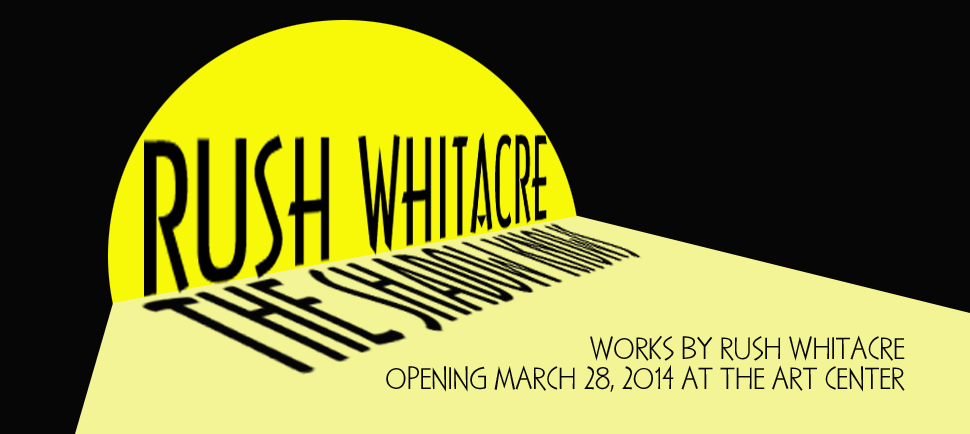
Rush Whitacre’s solo show, Shadows, is opening on March 28 at the Parkersburg Art Center in West Virginia. He’s been planning this for quite a while. I was worried he’d quit painting altogether because he’d gotten so focused on his writing when he left Brooklyn and returned to Ohio to be near his aging father in 2012. Leave it to Rush to give his show a tagline that quotes a famous line from a Depression-era radio drama. He answered a few questions for me:DD: It looks big from the photographs of the space.RW: It’s my first solo exhibition. Huge space, 4,500 square feet, with 15 large walls, 15 small walls. I’ll be exhibiting a lot of shadow art, drawings old and new, some drawings from my book Mabast. Four of them are five feet by seven feet, charcoal on moonstone paper.
DD: Some big paintings too no doubt.
RW: All of the LifeCycle flower paintings will be in the show, a triptych of roses, 15′ x 8′, irises 22′ x 12′, sunflower 11′ x 24′ (the size of Picasso’s Guernica), daffodils 4′ x 6 and a new dead flower 11′ x 13′. Also in the show will be a painting of a public sculpture in Marietta, Ohio carved by Mount Rushmore’s sculptor. Several paintings of scenes from my novel will have similar proportions. The smallest is 2′ x 6′.
DD: What about the ink drawings/paintings?
RW: I’ll show 63 pieces together in a collection called, Confessions, each one has its own name though they are all numbered from 1 to 63. They’re done on watercolor paper, with ink, water, and colorless oil pastel. Each piece is vibrant and splashy. I did one every day for two months. Each piece represents a small confession written using oil so that the ink would avoid that area. I did each piece quickly, like a crime of passion.
DD: It’s a perfect space for your three-dimensional shadow art, isn’t it?
RW: I’ll have quite a bit in the show: a Taylor Swift Shadow called “Red” made of pieces of pine wood I ripped down into thin smaller boards and then painted them all red. Miley Cyrus Shadow called “Wrecking Ball” sculpture looks like a huge pile of cat feces in a litter box; the shadow is of Miley on her Wrecking Ball. I’ll include the Marilyn Monroe shadow with Marilyn in her pose from the movie the Seven-Year-Itch titled “Seven Stilettos” made of seven pairs of white stiletto heels. “Pirate”, made of wood and canvas, creates a shadow of a pirate. “Silhouette II” which is made from garbage is one sculpture that makes three shadows, Venus de Milo, Michelangelo’s David, as well as his The Risen Christ.
DD: I’m really glad to hear you’re back painting. It took you a long time to get back to it after you moved back to Ohio. You had a lot of practical considerations to nail down, such as how to make money.
RW: I am painting when I can and as much as I can. I’m drawing too, obviously. I write very little but I’m reading a lot right now
DD: I heard you’re going to get a tattoo as part of a project
Gary Lee Cordray is planning. He’s really got some momentum behind it. I think Sabraw is going to participate.
RW: I don’t know if I will, but, I really want to. The Tattoo would say “Not Sorry.” Every human being who comes into my life leaves my life in a much better state than when they came to me, no matter the outcome of the relationship. I am Not Sorry for making people better, even if I lose them as a friend or a girlfriend as a result. I can only take action based on what I know, and if the results of my actions lead to total failure and explosions in the relationship then I can’t be sorry… a man can’t be sorry for making mistakes with the best of intentions… If all you want to do is make good things happen and you end up making only bad things happen, then don’t be sorry. Not sorry. Just not sorry.
DD: I second that. Bottom line: You’re back!
March 22nd, 2014 by dave dorsey
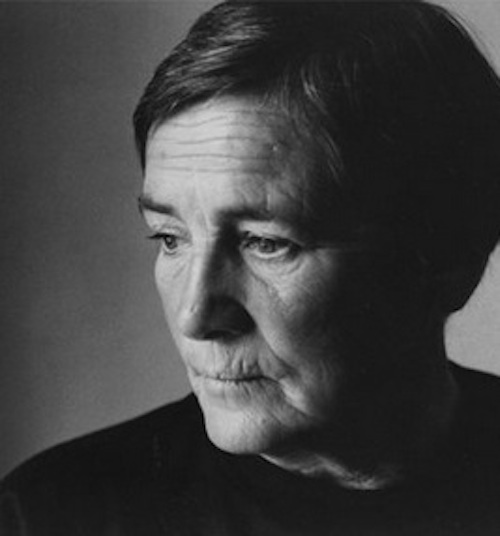
Agnes Martin, courtesy Pace Gallery
Wonderful to see Agnes Martin’s work honored as the Google search engine logo today. Look in vain for anything that will convey the beauty and stillness of her paintings on the Web. It’s yet another example of how little a reproduction can convey what an actual painting can communicate–in a particular and unique place and time, where your body is also required. Sorry Internet, deal with it. Her subtle application of color eludes photographs and computer screens. I saw her paintings on a visit to Santa Fe with Donna Rose, when we drove to Santa Fe from Albuquerque, where we’d flown to hear Dave Hickey interview Ed Ruscha at the Tamarind Institute. Martin’s work has an amazing sense of depth, despite the fact that she’s essentially working in a minimalist tradition. Her surface doesn’t appear flat at all, and the simple forms seem both distinct and yet continuous with everything else in the picture. She felt she belonged with the abstract expressionists, with a spirituality that shunned intellectualism. As the Pace Gallery wonderfully put it on their website for a show a decade ago: “Martin has historically explored non-referential and transcendent themes of Beauty, Happiness, Innocence, Joy and Love.”
March 20th, 2014 by dave dorsey
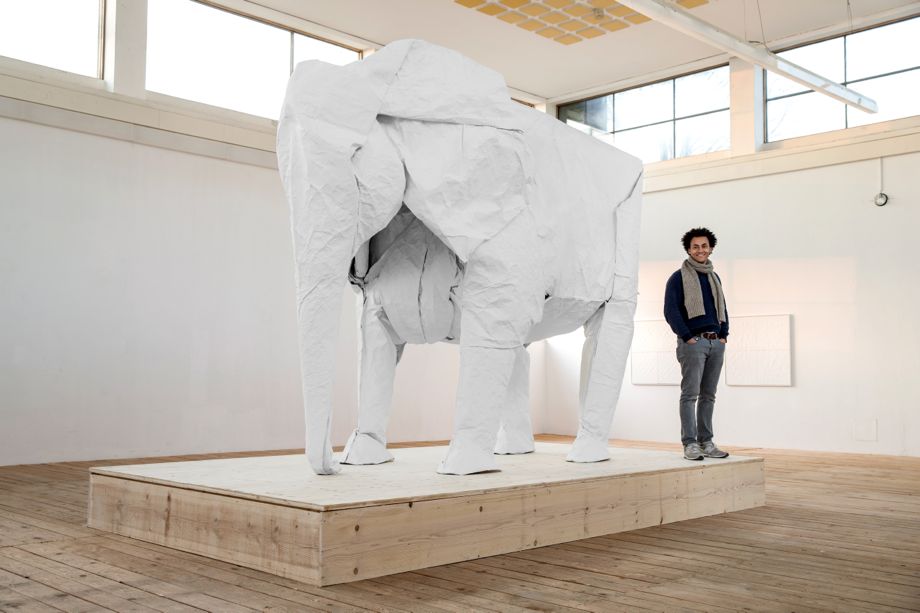
From one sheet of paper. One big sheet of paper.
March 17th, 2014 by dave dorsey
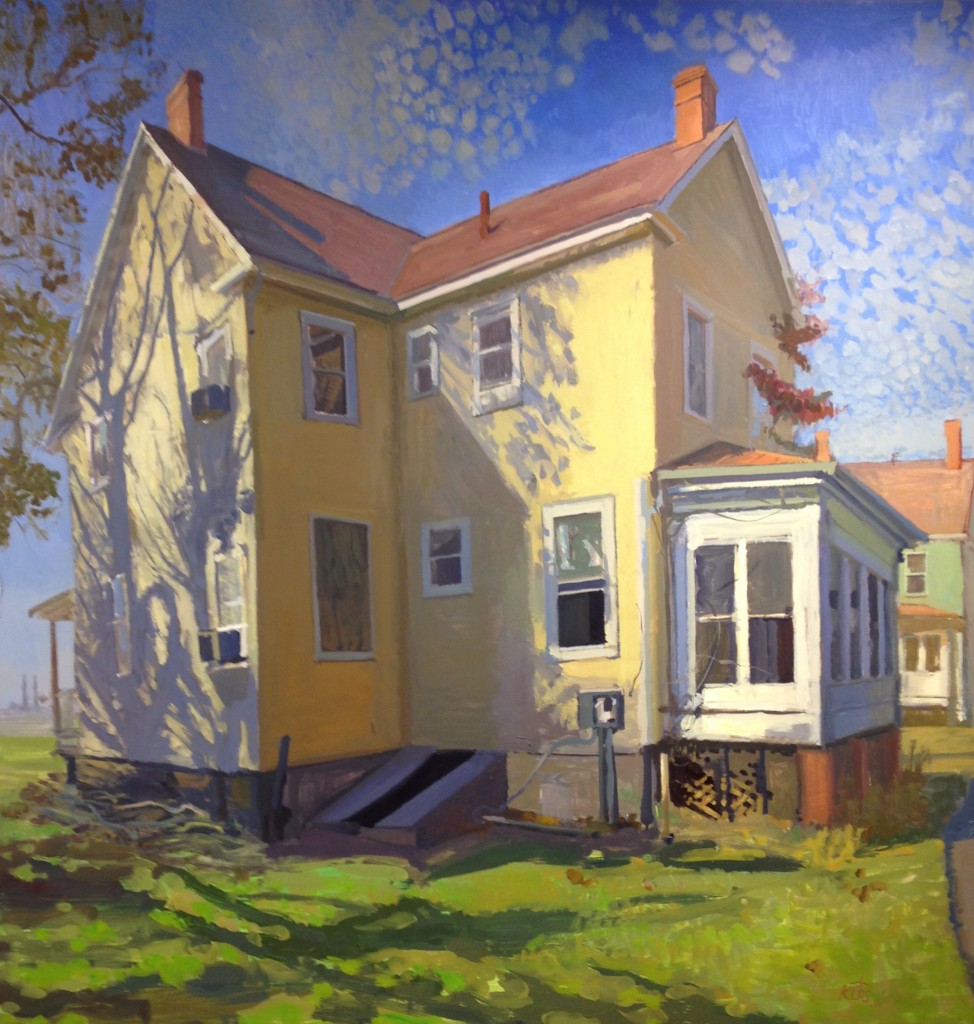 Saturday night I attended the opening at Oxford Gallery of a three-person show with new work from my old friend, Rick Harrington, along with two young artists whose work never fails to impress me: Matt Klos and Ryan Schroeder. Jim Hall put these paintings together in a brilliant way by seeing a commonality among all three: they are all depicting places or structures that have been abandoned, places once inhabited but now empty. The results range from a sense of desolation to a surprising aura of spiritual energy–as if the emptiness they’re facing has stripped away the trivia of daily life and what’s left in all of these images is a contemplative courage, a willingness to move through the absence of superficial beauty toward a mysterious, insecure spirituality. What’s impressive and humbling is how each of the three artists is doing this while learning how to see in an unpredictable way, not just in the sense of confronting a particular subject without preconceptions and trying to respond to each subject on its own terms–something Rick has been doing especially in a recent series of paintings not represented in this show–but also in terms of artistic method, where, with each painting, they are relearning, to a degree, how to get the image to come together. This is true, even though each artist has a recognizable individual style that’s uniform across all the work in the show, sometimes narrowing down choices dramatically, so that you would think the results could easily become formulaic, but this isn’t what happens. Each painting is a discovery for them, not just an exercise in doing what they’ve learned how to do over the years. I’ve spent many hours talking with Rick about how he wrestles with an image, and I’ve written about his process and his work many times here. He works from drawings he’s made at various sites, usually coming to an impasse and then getting beyond it. It’s an act of determination that pushes past frustration until the image comes together. Like Klos, in the series of abandoned houses he’s showing (inspired partly by his encounter with De Kooning at MoMA a couple years ago), Rick draws from abstract expressionism, especially Rothko, and for me the heart of abstract expressionism is a willingness to let the image grow and unfold, following where the image leads rather than controlling it–the painting comes to life in the process of painting and the artist nurtures the energy that emerges, without knowing how the image will come together and resolve itself even well into the process. It means not entirely being in control of outcomes, but rather taking chances and discovering as you go.
Saturday night I attended the opening at Oxford Gallery of a three-person show with new work from my old friend, Rick Harrington, along with two young artists whose work never fails to impress me: Matt Klos and Ryan Schroeder. Jim Hall put these paintings together in a brilliant way by seeing a commonality among all three: they are all depicting places or structures that have been abandoned, places once inhabited but now empty. The results range from a sense of desolation to a surprising aura of spiritual energy–as if the emptiness they’re facing has stripped away the trivia of daily life and what’s left in all of these images is a contemplative courage, a willingness to move through the absence of superficial beauty toward a mysterious, insecure spirituality. What’s impressive and humbling is how each of the three artists is doing this while learning how to see in an unpredictable way, not just in the sense of confronting a particular subject without preconceptions and trying to respond to each subject on its own terms–something Rick has been doing especially in a recent series of paintings not represented in this show–but also in terms of artistic method, where, with each painting, they are relearning, to a degree, how to get the image to come together. This is true, even though each artist has a recognizable individual style that’s uniform across all the work in the show, sometimes narrowing down choices dramatically, so that you would think the results could easily become formulaic, but this isn’t what happens. Each painting is a discovery for them, not just an exercise in doing what they’ve learned how to do over the years. I’ve spent many hours talking with Rick about how he wrestles with an image, and I’ve written about his process and his work many times here. He works from drawings he’s made at various sites, usually coming to an impasse and then getting beyond it. It’s an act of determination that pushes past frustration until the image comes together. Like Klos, in the series of abandoned houses he’s showing (inspired partly by his encounter with De Kooning at MoMA a couple years ago), Rick draws from abstract expressionism, especially Rothko, and for me the heart of abstract expressionism is a willingness to let the image grow and unfold, following where the image leads rather than controlling it–the painting comes to life in the process of painting and the artist nurtures the energy that emerges, without knowing how the image will come together and resolve itself even well into the process. It means not entirely being in control of outcomes, but rather taking chances and discovering as you go.
It strikes me that these three are attempting to do just that, and yet this is MORE
March 15th, 2014 by dave dorsey
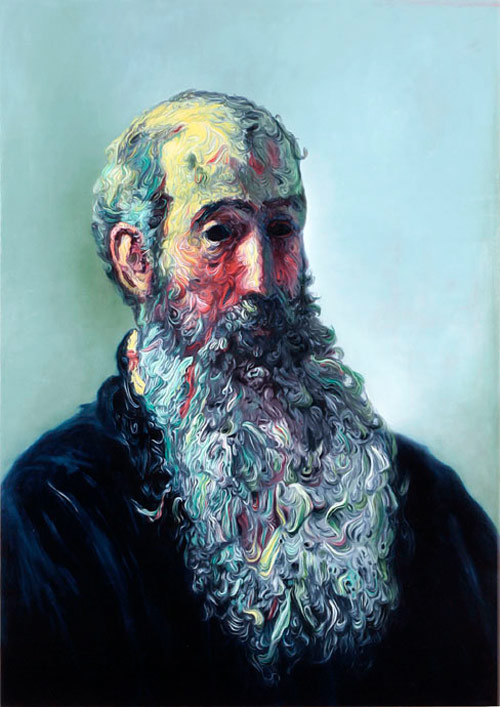
Glenn Brown’s, Declining Nude, a take on Pissarro’s self-portrait
Today I will continue working on a painting I started more than three weeks ago, hoping to finish some challenging work I’d like to show in June at Viridian Artist. I’m so busy right now, I rarely have time to write anything thoughtful here, but when I wake up early I try–which is nearly every morning in this endless winter, with record low temperatures here in Rochester, which apparently has drifted northward to the edge of the arctic.
Recently, my friend Walt Thomas sent me How a Science Fiction Book Cover Became A $5.7 Million Painting. It describes an auction sale of a painting in which Glenn Brown appropriated an illustration by Chris Foss, used as the cover for a book by Isaac Asimov, and then repainted the resulting image in his own heightened style. (You can see other examples of Glenn Brown’s compelling postmodern work with a quick Google search: they’re like a re-envisioning of what the Old Masters saw through the eyes of a charismatic zombie. When he’s dealing with historical work, his own paintings are fantastic. When he’s asking permission and then slightly modifying a contemporary painter’s output, it irks me, especially when the art world uses the results to move so much money from one deep pocket to another.) If you depend that much on the work of another living artist, then shouldn’t the proceeds be split fifty/fifty? Apparently postmodernism, with its irony and appropriation, is alive and well, one of the few great jobs in this zombie economy if you can get it. Needless to say, I would never complain when DJ Premier samples, say, Illmatic, (I guess he’d be sampling himself, in a way) which itself sampled plenty of previous recordings. He would get nothing but gratitude from me, but those are fair use, in my book, little quotes from much larger work. Yet when you enlarge and essentially colorize an entire earlier image that was sold as the livelihood of another artist, isn’t that crossing the line? I do not know the answer to this question, since I’m not an attorney, but I do know that it doesn’t feel right to me, the way so much postmodern work feels, intentionally or not, inauthentic, more or less a clever con. (I don’t feel that way about Brown’s reconstruction of Old Master images in his own vision, like the self-portrait by Pissarro above. Those paintings feel original in their own way, intensely painterly and passionate and spooky, and they belong to a long tradition of internalizing previous work by repainting it in the artist’s own style. Even Van Gogh did it. In Brown’s reworking of Rembrandt, say, there’s more of Brown in the paintings than the previous artist and Brown’s own vision is intriguing.)
What troubles me about the assumptions that make this kind of work possible is something much larger in our culture—and it might even be a deeper shift than the word “culture” indicates. This feels like a steady, slow erosion of the notion of human nature itself. I’m tempted to reread The Plague, because what’s happening now feels as if that book could serve as its metaphor. It’s seems to be happening everywhere. It’s the way in which everything now seems to conspire to dissolve a sense of individual identity and selfhood, while making you believe you’re asserting it like never before. I believe this is one of the primary goals of postmodernism itself, isn’t it? We have no soul, no enduring identity; we are simply a welter of impulses, perceptions, ideas, emotions, woven together by cultural and economic forces outside our control, mere nodes in a network of signifiers that give birth to the illusion that we actually exist as individuals with an independent mind and heart, free to choose what we do in our lives. (Don’t remind me how close that is to Buddhist metaphysics, since I’ve done bush-league Buddhist meditation for decades and am an enthusiastic advocate for wisdom and compassion, as little as I might practice either in my own life. I’m on a rant here, and I don’t need inconvenient reminders like that right now.) As dutiful postmodernists, we need to deconstruct what has come before, and what’s around us, in order to become free of it, though who, pray tell, is free when it’s all said and done, if our individual identity is itself an illusion? If we are just a mechanistic net of neurons firing in sequences determined by everything happening in the world around us, conjuring up an illusion of personal integrity, then why does it matter what we do? Hence the gloomy, lucrative ouvre of Glenn Brown: rather than be troubled by the anxieties of influence when gazing at the Old Masters, just appropriate it and do some interesting violence to it, adding your signature at the bottom. And I use the word interesting without irony here. I like what he does. So, given this assumption, that many of the beliefs we inherited from the Enlightenment, and the Greeks, which went into our ostensibly naïve assumptions about how an individual can make his or her way through the world, and enabled us to found this nation of individuals who once believed they were free to build an original life for themselves out of hard work and ingenuity, well that’s all so 20th century . . . If you originated it, I can adopt and sell it. Ideas can’t be copyrighted. Information wants to be free. And so on. We aren’t really free agents, with an enduring identity that has any substance apart from the soup of signifiers around us—the shows we watch, the ads we take in, the music we hear, the noises we make on social media, such as this blog—we’re just a collection of impulses generated by what other people have done and are doing around us and who we are depends on what others know about us.
Believe this, and then all of what’s happening now makes sense. Privacy has been one of the first imperatives to go. It’s founded on the notion that we have some right to ourselves—our thoughts, our feelings, our possessions and the fruits of our labor in general–that no one else can violate. Is it proper to feel this matters now? For more than a decade—think back to your first Compuserve or AOL email account if you were alive then, back in the 90s if you want to know when this really started—your private thoughts and feelings have become more and more open to public scrutiny. “If you don’t want it on the front page, don’t put it in an email” has been an adage for email. I have friends who say, “I’m not doing anything wrong, why should I care if someone else reads my email?” And they probably shouldn’t care, but something integral to being human has been lost in the willingness to voice that dismissive question. We are becoming unreal to ourselves in a way that my friend Richard Todd explored in The Thing Itself: it gets harder and harder to distinguish between what’s illusory and what isn’t. (Not that it was ever easy in the moral realm.) If someone else is free to carefully monitor the content of my life on the Internet, is that evil or just the whole point of being on the Internet now? Along with Diane Feinstein, I lean toward the former.
Last Thursday’s Community episode did a fast, poetic twenty minutes or so on the psychological dependency of social media. A beta test of a new app, Meow Meow Beans, turned the college into a hierarchy of a small elite leisure class wearing togas and the rest of the school, the reign of the most popular over all the rest as everyone struggled to get a five-star popularity rating; it was replaced by a revolutionary junta, just a mirror image of one tyranny rather than the other. Capitalist excess followed by totalitarian tyranny, the old familiar story. The latter made more sense as a critique of social media: the mob rule of popularity ratings leading to a revolution of the people, which leads to just another kind of elitism. What it suggested to me is that people had pretty much become their phones, where they tracked what other people thought of them. No one really had any kind of character apart from how they were seen. (Leave it to a sitcom to have familiarity with the need to be seen in order to be.) The implication was that anything private left after that kind of self-exposure either didn’t matter or was a threat to the system. The implication was that as an Internet participant you are essentially saying, you don’t care if your entire life is on view to anyone and everyone, whether it’s your group of friends or your larger brother at the NSA, since you “have nothing to hide.”
Privacy isn’t simply about hiding something wrong or bad. It’s about preserving the meaning of what you do in a way that others aren’t able to understand or manipulate or deconstruct to their own ends. In the composition of a great poem, there is a level of hidden meaning, accessible only to a poet, that gives the poem power—no amount of deconstruction will uncover what that is, because it’s private. It denotes all sorts of things, but ultimately what drives it, what keeps a poem fresh, I believe, is the mystery of what isn’t there, a mystery otherwise known as Robert Frost or Syliva Plath or T.S. Eliot. Someone else could sample that poem and put it to other uses, and dissect it to within an inch of its life, but what others can’t sample is the essence, the heart, of the work itself. What keeps it alive is the elusive identity of the poet, there between every word, but also not there in what’s actually said. It’s something you can observe up to a point, and even imitate how it expresses itself, but it’s ultimately beyond reach. What a person actually is can’t be digitized or politicized or channelled into some intellectual agenda. We seem to think nothing we do or think or experience should be beyond reach now: we live in order to exhibit who what when where and how we are. We’re willing participants in the exposure of of our lives. As well as, secondarily, to publish cat videos. (A gross overstatement, considering the almost entirely trivial content of social media.) Thursday’s episode of Community satirized this impulse. A new app put everyone at the mercy of his or her cell phone, everyone doing anything they could to get a five-star Meow Meow Beans rating. It was a lot to weight to pack into a half-hour sitcom, but Dan Harmon made it entertaining (I’m assuming he’s still in charge at the show). It will be interesting to see if “Meow Meow Beans” becomes a meme on social media.
Few people seem to care about privacy now. Is property, as well, starting to follow down the same path? I once bought albums on vinyl, and movies on videotape. I once owned Photoshop. Now I’m wondering if I shouldn’t just give up ownership outright and rent access to all my entertainment and art and software via some kind of streaming account, such as Spotify. I still own a car, but fewer and fewer people do. In this economy isn’t it smarter to rent? Will access to all information, and property, follow this same path? (Did the loss of net neutrality get much notice in the media?) I have always had to pay for my New York Times. Nothing wrong with that. But I used to actually own it, and have private access to it whenever I wanted, as long as I was willing to hoard towers of newspapers in a corner. I much prefer being able to search the archive of that newspaper’s history on the Web. But what I give up is control of my access to that information. If someone turns off the Internet spigot, then I am haplessly uninformed. And, granted I’m getting older, and memory is slowly being revealed as the unreliable narrator of my life, but why should I care if I can’t remember anything? I’ve outsourced my memory in large part to my iPhone and my laptop. Google is my memory now. At some point if an individual’s link to the Internet gets severed, could that be the equivalent to a computer reboot? Tabula rasa, reformat, reinstall. We start fresh, our brains merely blank slates we can refill with our operating system when our ISP grants us access again to our thoughts and dreams. Life continues to feel more and more, as it has been doing for years now, like a Philip Dick novel.
We’re being trained to think of experience as something granted by an external source: our ISP, our cable provider. Streaming vs. owning is an example of this paradigm shift, but you can see it in everything. The loss of privacy is enormous in the way it shapes the concept of a lone, private, Thoreauvian self—as something either inconsequential or illusory—and nobody seems to really care that much about it, because we’re all too distracted by the endless incoming torrent of media to actually notice how we’ve simply become another outgoing stream of data. Once you do away with that individual agenthood, then you’ve made the whole notion of America obsolete. If there are no self-sustaining individuals, then what’s the point of that antiquated Constitution?
Should I bring this around to painting now, or just keep getting things off my chest?
Painting strikes me as one of the most utterly Luddite things one can do at this point. I sit at my old-school easel, with a smelly assortment of minerals and fluids on a sheet of thick glass, with wooly, worn brushes I struggle to smooth into a pointed tip, and I spend hours applying color, inch by inch, slowly, to a length of cloth stapled to a wooden frame. The physical struggle of painting is a large part of what it’s about. As I’m sure I’ve pointed out before, a whole length of muscles on one side of my back are far more developed than the muscles on the other side, from decades of simply holding a nearly weightless brush up in the air. When I saw it in a mirror a few years ago I thought, what the hell?, and eventually realized, oh right, I’m a painter.
In physical terms painting is like the sort of labor that robots have stolen from us. Yet in all other respects, it’s exactly the opposite of it. It’s a unique embodiment of who I am, as a person, an individual, partly because it can’t be reduced to data. It’s one of the few creative acts left that can’t be copied exactly as it is. It’s one-off, and in that lies the pathos and beauty and real-ness of it. Yes, it can be photographed and passed around in extremely hi-res images that show me every last detail of the surface, but in all the years of making and looking at art, I’ve yet to see a photographic image that actually conveys what I see when I look at the actual work. It may have to do with the way oil paint reflects light, as skin does, from various depths: the outer surface, the deeper layers of flesh, and even the dark course of veins, all reflecting different colors that mix on the retina in a way that a flat reproduction can’t. It averages out those colors into a single one, flattening the image and giving you the next best thing. But there’s so much more to it than that single color per pixel. If lit a certain way for the shot, a photograph can even show you the texture of the surface. I know from reproductions that Braque mixed sand into his paint, but no photograph of his work can convey the sense that, when you see one of his gueridons at the Phillips, you are looking at something as solid and heavy and ancient as a sheet of sandstone, where the colors are merely striations in the rock itself. As is true of Burchfield, Braque conveys something utterly unique in his best paintings, something no other painter has even remotely achieved, and I’ll be damned if I can say what exactly that is, but I love that quality in their work the way I love sunlight. You can’t get it from a photograph of what Braque did: you can get a taste, but it isn’t the same. Bonnard, don’t get me started. There’s no way to grasp what Bonnard achieved through reproductions of his work. You have to see the actual paintings. Vuillard as well. I could add dozens of other names. But what if someone, with a 3D printer, could actually recreate a three-dimensional duplicate of one of Braque’s paintings? That way you would have everything: the color, the texture, the relief map of the painted surface itself. But wouldn’t it be colored plastic? A 3D printer that could generate objects out of the original materials? Are we into the realm of absurdity here? (On the other hand, if someone could do that, I’d hang it on my wall. I can’t afford the real thing.)
My point is that painting is one of the ways we have of being true to the mystery, the secrecy, of human nature. It’s a stubborn way of living off the grid, at least in the act of making it. With the ongoing death of art galleries (OK Harris, R.I.P.), the rise of the Internet as a marketplace for art, and all the other ways we can addle our minds media—here I am using that media, right?—our culture is attempting to deny the reality of what painting embodies, as may be eroding the privacy and mystery and integrity of individual human nature. One way of standing in opposition to that resides in a willingness to quit ranting and just get back to the labor of picking up a paint brush, which, finally, I intend to do right now. Or as someone ought to have said on Community, “Be a one, and be yourself.” Maybe someone did. If I missed it, it was probably because I was checking email.
March 14th, 2014 by dave dorsey
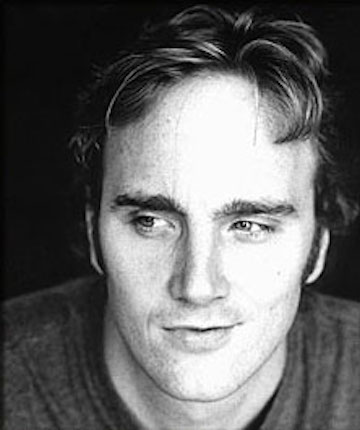
From the latest Mohr Stories. Comedians talking about performance art, like a little side note from My Dinner With Andre. If it had been lunch, maybe. Couldn’t I do this at home?
Jay Mohr: Didn’t you play Marina Abramovic?
Beth Lapidas: Yes. I started my career as a performance artist, and I left performance art because I wanted to be funny.
Jay Mohr: It’s a fine line between performance art and this person’s really wasting my time.
BL: Uh, well a lot of performance art is that.
JM: Cause I’ve been to a bunch. Marina Abramovic, whom you played a version of on Sex in the City, now owns a farm in upstate New York. I’m going.
BL: Yes she’s building this institute. She wants to get out of ego, but she’s still calling it the Marina Abramovic Institute.
JM: We all want “look at me.”
BL: Look at me. Don’t look at me. Look at me. Don’t look at me.
JM: And you need to look at me more when you aren’t looking at me. There was a huge article, I think it was in Vogue.
BL:There was an article in the New York Times a couple weeks ago.
JM: I read both. She’s got a farm in Hudson, New York. It’s like hundreds of acres. You spend a little money. Not crazy money. You go up there and make a six hour commitment and you get a bag of rice mixed with lentils and you have to separate the rice from the lentils and you have to count them. At some point you go from what the fuck am I doing here to complete transcendental bliss.
BL:A meditative state.
JM: It’s forty one, forty two, these are the lentils and these are the rice. And you go for a walk.
BL: And there’s a place for taking a nap.
JM: We’re in, by the way. We punched our ticket.
Afterthought from your faithful blogger: who says performance art, and art in general, shouldn’t be funny, or at least amusing? Why couldn’t Jay’s guest have stuck with it and simply made her art exactly what she wanted to say? Why did she have to “go into comedy?” If you want the hard truth about human nature, you can’t do much better than Louis C.K.. One of his sets shows me as much about human life as a good short story. C.K.’s work is closer to the reality of human experience than a lot of what passes for high art. He says things most people wouldn’t dare say. I could name a dozen other comedians who do the same. Starting with Kinneson. It’s partly why I listen to them when I paint. When I think of the Dalai Lama I don’t think much about anything he’s said. I remember his quiet laughter as he’s saying a large part of it. On that note, from last night’s Community, a little rap from a man in a PayDay peanut bar suit: Another Day Another Dollar:
Well, I’m a peanut bar, and I’m here to say
Your checks will arrive on another day!
Another day, another dime, another rhyme, another dollar,
Another stuffed shirt with another white collar,
Criminals, Wall Street, taking the pie,
And all the black man gets is a plate of white lies,
Prisons be recruitin’ ’em, and police be shootin’ ’em,
Them rap artists lootin’ ’em, them labels all deludin’ ’em,
And Barack Obama is scared of me,
‘Cause I don’t swallow knowledge and I spit it for free . . .
One of the funniest moments I’ve ever seen on that show. Starts around 1:20 here.
March 12th, 2014 by dave dorsey
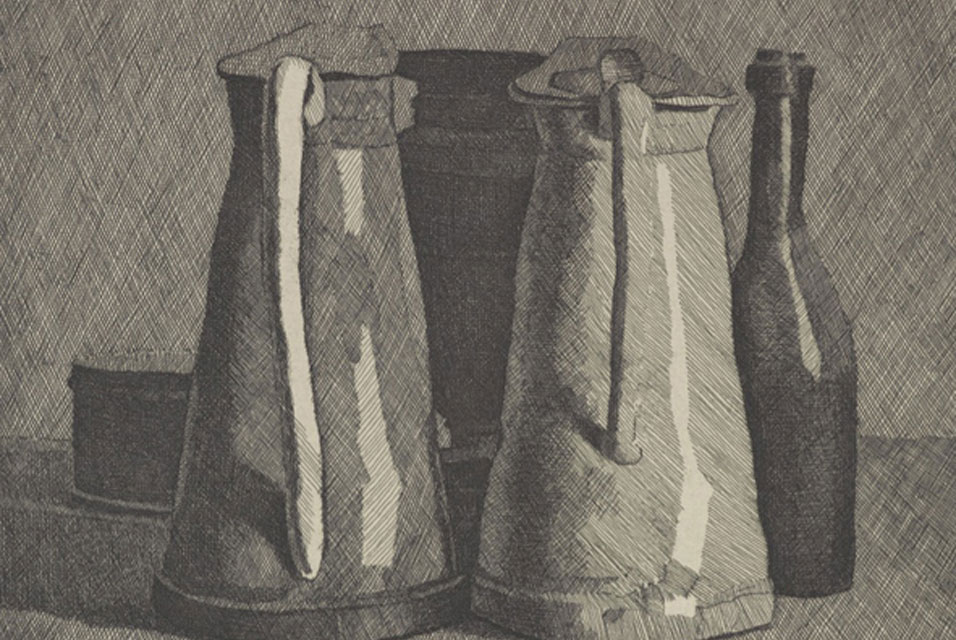
Giorgio Morandi, Still Life with Five Objects. 1956.
A quote from Marshall Gregory’s essay on literature that applies just as well to conceptual vs. perceptual art, or what Frank Lentricchia, in the same essay, is quoted as calling “Art as stubborn specificity, as untheorizable peculiarity.”:
“Since modernism’s elevation of the notion of aesthetic purity and writerly experimentation in literature, and since postmodernism’s elevation of the notion of linguistic indeterminateness, the educational power of literature, history, and other narrative forms has either been neglected or reduced to the inculcation of ideology. The fuel that powers all of these imaginative activities is concrete details. Abstractions, generalizations, precepts, and logic play indispensable roles in reasoning and theory-making, but the imagination needs images, textures, sensations, smells, sounds, tastes–the look and feel of particular things in particular contexts–in order to do its work.”
–Marshall Gregory The Sound of Story: Narrative, Memory, and Selfhood
March 9th, 2014 by dave dorsey
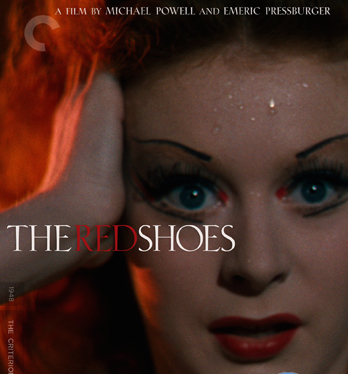
From the Criterion website, Scorsese on Powell and Pressburger’s The Red Shoes, with some comments that could apply to art in general:
I’ve said and written so much about this picture over the years; for me it’s always been one of the very greatest ever made, and every time I go back to look at it—about once a year—it’s new: it reveals another side, another level, and it goes deeper. What is it that’s so special about The Red Shoes? Of course, it’s beautiful, one of the most beautiful Technicolor films ever made; it has such an extraordinary sense of magic—look again at the scene where Moira Shearer is walking up the steps to Anton Walbrook’s villa, especially in the new restoration: it seems like she’s floating on currents of sparkling light and air. And there’s no other picture that dramatizes and visualizes the overwhelming obsession of art, the way it can take over your life. But on a deeper level, in the movement and energy of the filmmaking itself, is a deep and abiding love of art, a belief in art as a genuinely transcendent state.
—Martin Scorsese
March 7th, 2014 by dave dorsey
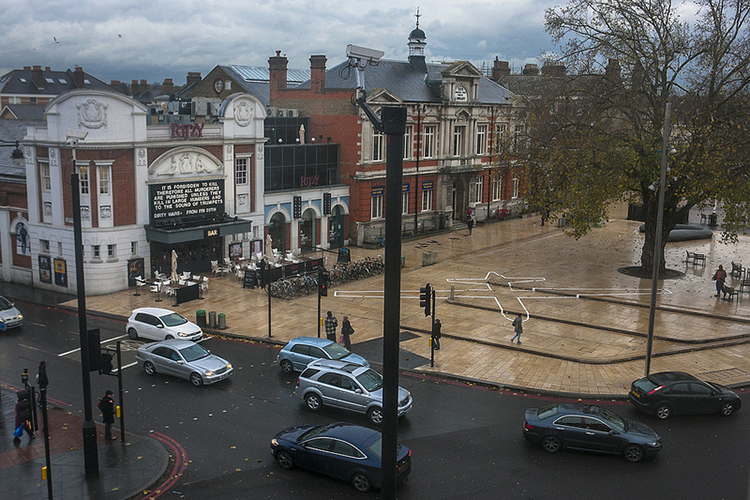
Powerful and simple street art from Fast Company. It would be creepier and more effective if we didn’t know who did it. Banksy must wish he’d thought of it.
March 5th, 2014 by dave dorsey
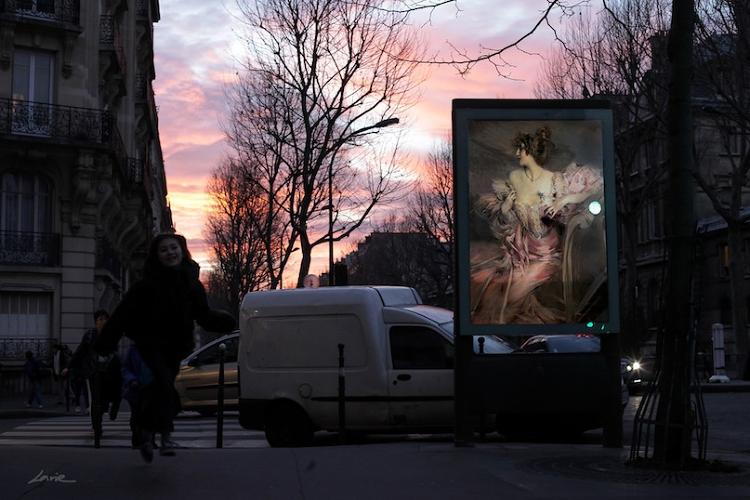
Art instead of ads. Like it.
This would be cool. Fragonard in the subway; Sisley riding on top of cabs. Not that it will ever happen. From Fast Company.
March 3rd, 2014 by dave dorsey

Amy Chiao’s fort and treehouse for visitors, tenants
Inside her loft, artist Terri Chiao has built a great place for fellow artists, or anyone else, to stay for $118 a night, and it’s in Brooklyn, no less. A fort and a treehouse. What could be better?
March 1st, 2014 by dave dorsey

Food to raise money for British museums at The Guardian.













